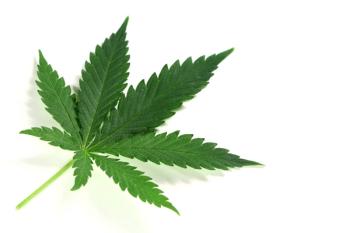
Cannabis Evolutionary Insights: Interview with Anna Schwabe, PhD
In this interview clip from our Women in Grow: Leadership in Cannabis Genetics and Cultivation supplement, Anna Schwabe, PhD shares insights into genetic characteristics of the cannabis plant and potential research into disease resistance.
In our Women in Grow: Leadership in Cannabis Genetics and Cultivation supplement, Cannabis Science and Technology interviewed researcher and educator Anna Schwabe, PhD, Associate Lecture Professor at the University of Colorado and Chief Operating Officer of CannaGen, an online cannabis genetic marketplace for licensed breeders, nurseries, and cultivators.
In this video clip, Anna Schwabe shares insights into the evolutionary traits about the plant, from how it has been cultivated, to locally adapted plants, to research into disease resistance.
Check out our
Transcription
Sebastian Krawiec: You started with cacti, and then you moved on to cannabis, I wonder if, can you talk about what are the potential implications cannabis genetic research has on understanding of plants and other botanicals, more broadly in terms of their genetics? Is there anything that's that has been informative to you as you study cannabis to other plant areas?
Anna Schwabe: Cannabis is a really interesting plant, and that's part of the reason why I love it. I mean, I would even go as far to say that cannabis is the most interesting plant on the planet because it is dioecious for the most part, which means that it has separate male and female plants, and only 6% of flowering plants are dioecious. So that makes it interesting in and of itself, and the fact that we continuously segregate the females from the males could be an evolutionary driver in terms of the cannabis plant – all she wants to do is make seed and have babies, that's all she wants to do. That's the whole purpose of her life, and yet, we aren't letting her do that. And, as Jeff Goldblum in “Jurassic Park” says, “life, it finds a way.” So now we're seeing a lot more plants that are producing pollen-producing structures, all by themselves, and cannabis has the ability to do that. So I think that's very interesting.
Also, we've been cultivating this plant for thousands of years, ten thousand years. It's one of the earliest cultivated plants that we have, and because of that, it has a very interesting and complicated genome. There's big chunks missing, there's big chunks that have been repeated. And we don't think that there is any truly wild cannabis out there anymore. It's wind pollinated, and the pollen can travel really far. So what we've done as humans is we've picked it up and taken it everywhere that we've migrated to, and as such, cannabis is now all over the planet for the most part, and the wind is taking it everywhere. So even if there are or were isolated populations of cannabis that people haven't physically been to, there's a really good chance that pollen from our cultivated cannabis has gotten into and sort of contaminated those wild populations to the point where they're not truly wild anymore. They are showing signs of plants that have been selected for by us. So that's something that's interesting.
But we do have land races which are locally adapted cannabis plants, which is why plants in Jamaica look different from plants in China, which look different from plants in Thailand. And I think something that's really interesting that could be investigated going forward or in the future, is the secondary metabolites, the terpenes, and the other compounds that the plant produces. Are there different terpenes that are produced in these localized areas? And do they have a function in terms of what pests and predators are in those areas? Because we select for what we like. But, you know, traditionally, we think of things like terpenes being for pest resistance and things like that. So do some of these terpenes serve different functions in these different areas? And if so, what are they? What predators do they affect? Things like that. So there's so many different avenues for research in cannabis the plant – I don't generally deal with it on the people side, once it's out of the ground. I think there's a lot of really interesting research that could be done. Also with diseases, like we're seeing a lot of diseases now, powdery mildew and a lot of plants are susceptible to hop latent viroid. Are there plants that are locally adapted that have more resistance to some of these pathogens than the ones that we've been babying in our cultivated indoor facilities is another area for research. But yeah, there's lots of stuff. I don't know if that answered your question or not.
Sebastian Krawiec: Oh, it totally answered my question.
Newsletter
Unlock the latest breakthroughs in cannabis science—subscribe now to get expert insights, research, and industry updates delivered to your inbox.




